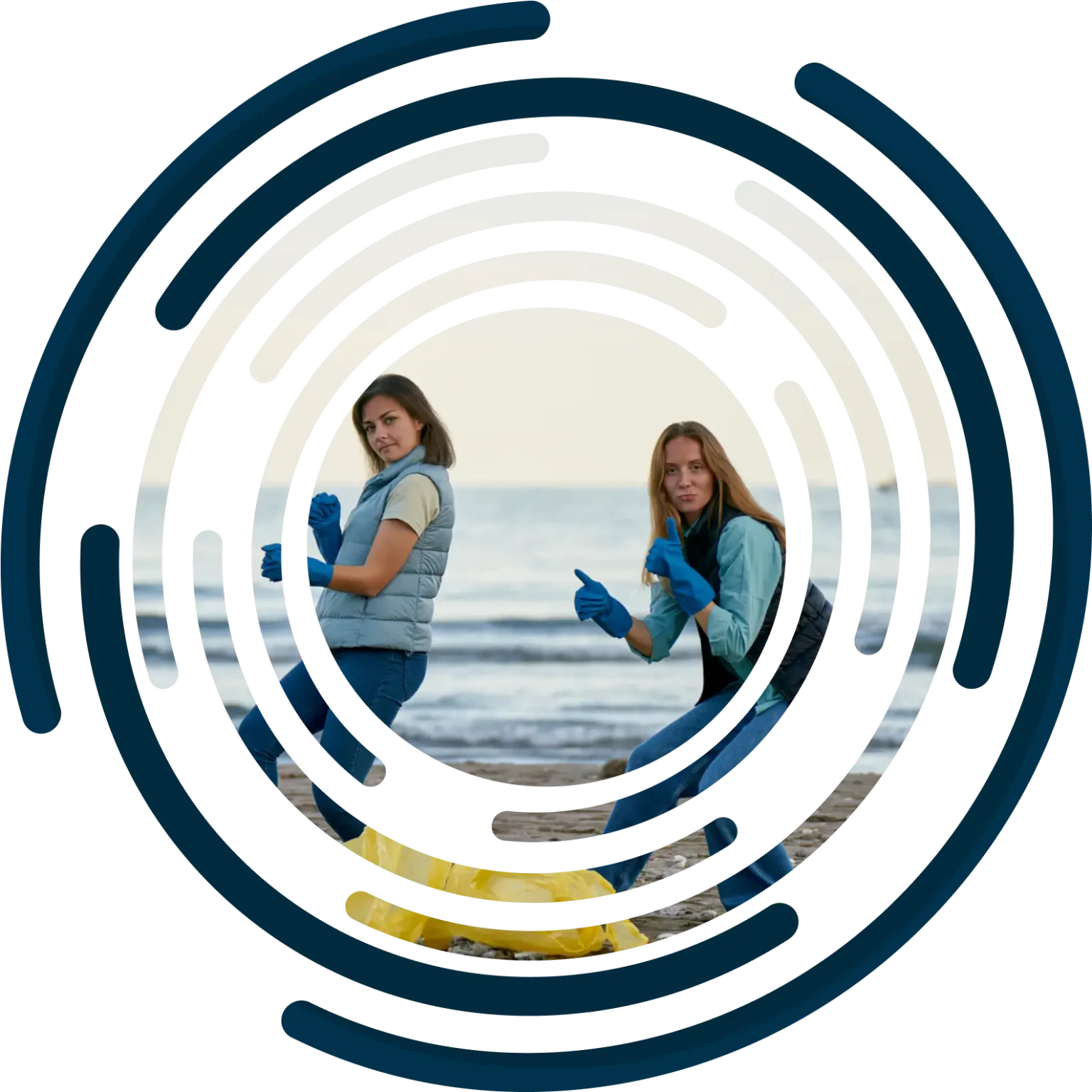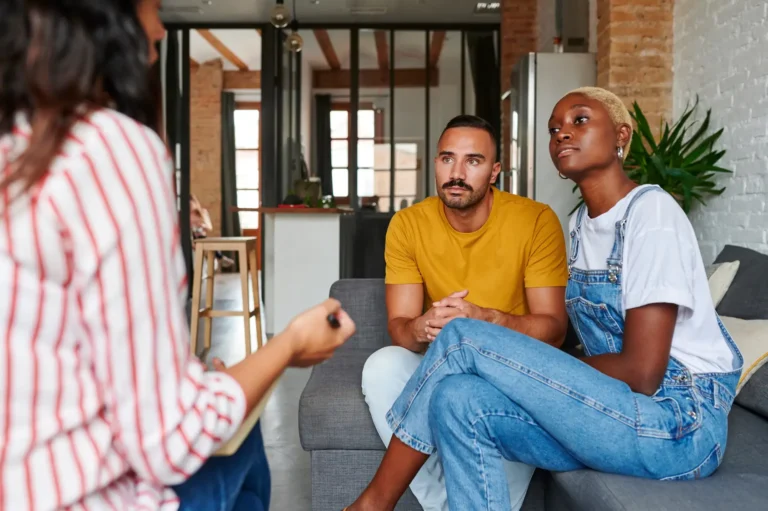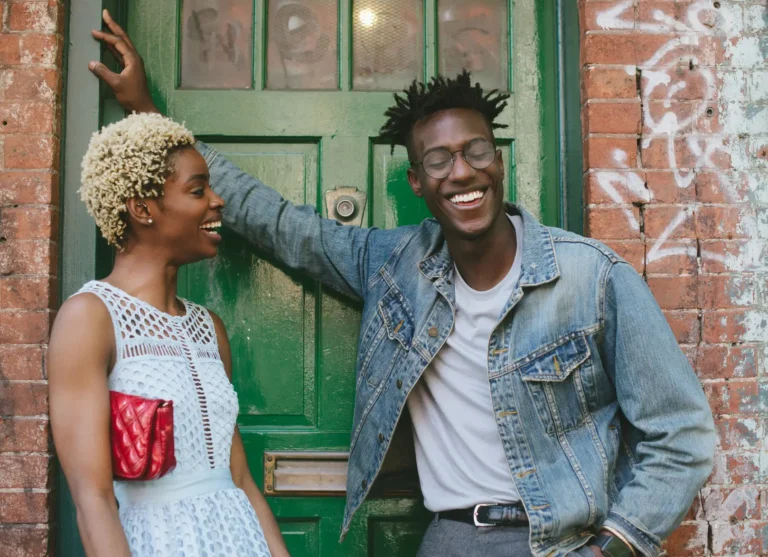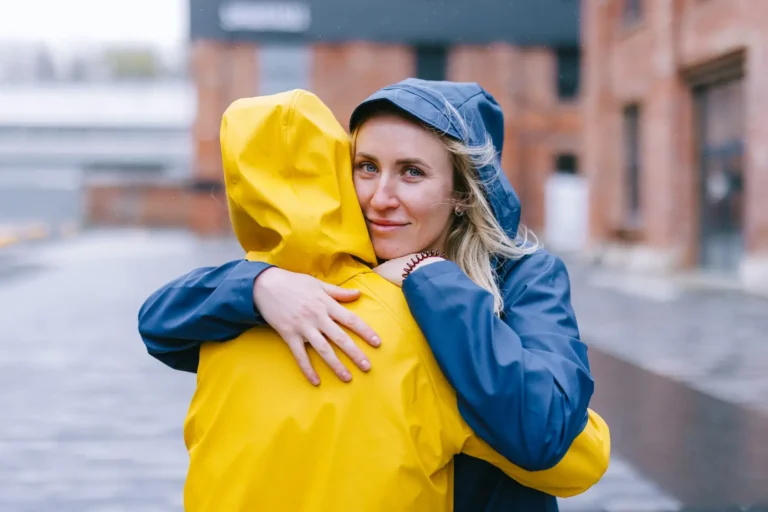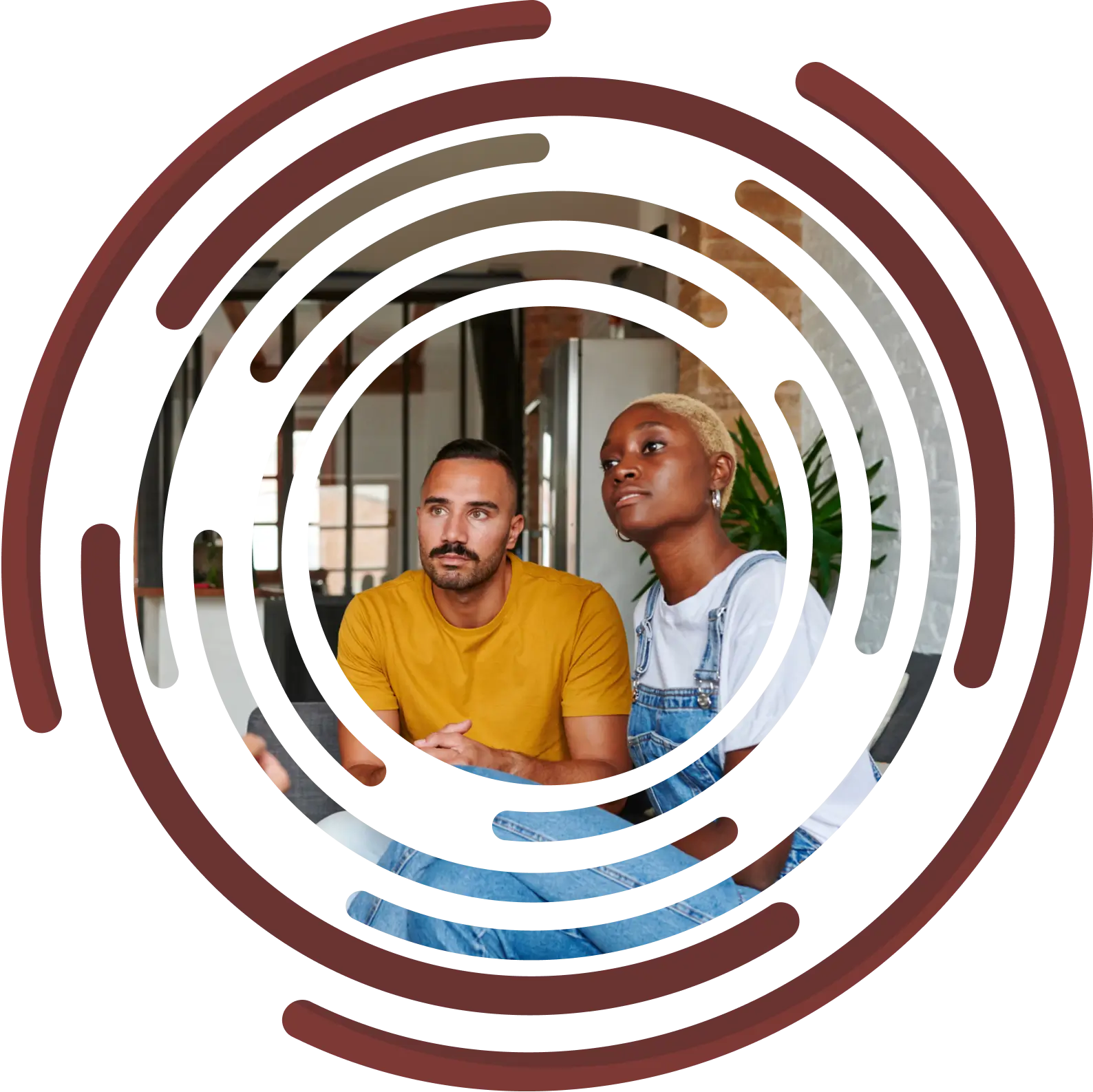
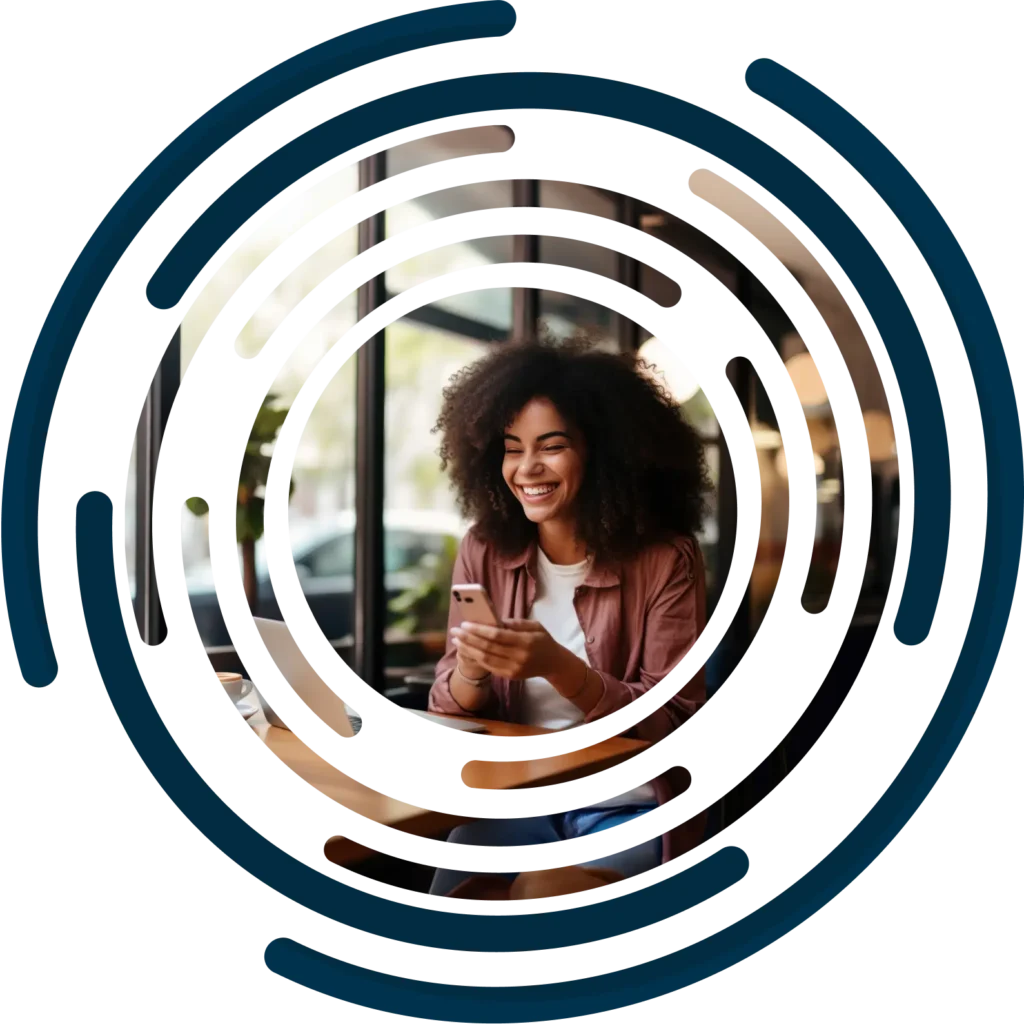
How Behavioral Health System Balitmore introduced a new mental health resource, 988, to Balitmore County by building trust and overcoming bias.
Building Trust in Mental Health Resources: Introducing 988 in Baltimore
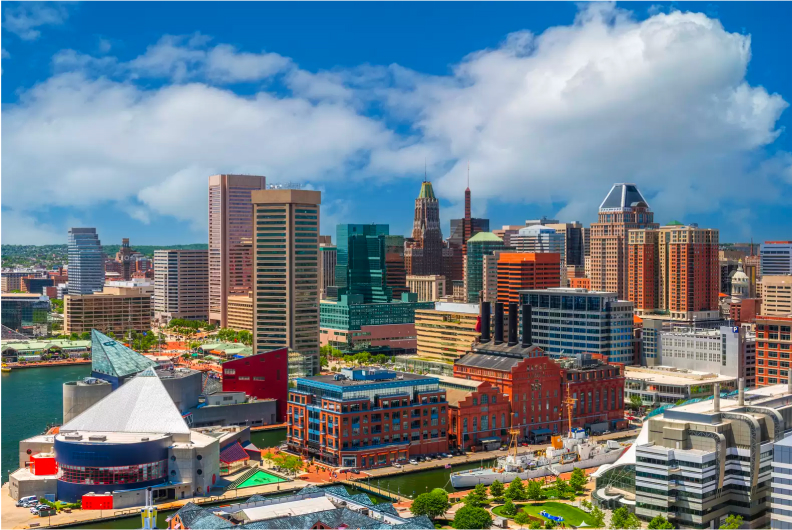
Client Background
Behavioral Health System Baltimore (BHSB) is Central Maryland’s leading expert and resource in advancing behavioral health and wellness. BHSB guides innovative approaches to prevention, early intervention, treatment, and recovery for people who are dealing with mental health and substance use disorders. Their work helps build healthier individuals, stronger families, and safer communities.
BHSB launched the 988 Suicide and Crisis Lifeline in Baltimore City, Baltimore County, Carroll County, and Howard County to service those experiencing a mental health emergency.
Client Challenge
BHSB had a significant challenge ahead of them: educate residents of three counties about a new crisis line that they could use. To achieve this, BSHB needed to overcome stigma, mistrust, and other reservations surrounding mental health and government initiatives, and make their messaging culturally relevant to their four municipalities with extremely diverse people and cultures:
- Baltimore City has a large proportion of Black citizens, is urban, and has many people living in poverty.
- Baltimore County is predominantly White and suburban.
- Carroll County is primarily rural, interspersed with farms and small villages.
- Howard County is suburban with diverse ethnic populations.
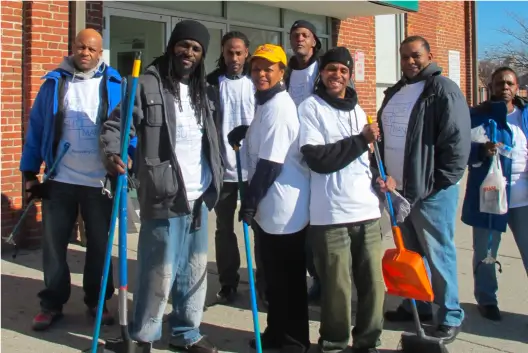
Campaign Overview
Channel Explanations
- Digital out-of-home (DOOH) media refers to digital media that appears in environments accessible to the public. This includes digital billboards and outdoor signage, as well as networks of screens found in businesses like malls, healthcare providers, gas stations, airports, train stations and bus shelters, and more.
- Online Video (OLV) ads run before, during, and after video content on websites. OLV ads appear in both in-stream and out-stream formats, across browsers and apps, and on devices such as desktop, mobile, and tablet.
- YouTube advertising is a pay-for-placement system that allows brands to reach YouTube’s more than 1 billion users through targeted advertisements. These ads (videos, banners, or text) can be shown before the requested video plays, as an overlay while a video plays, or in the right margin of the page.
- Native Display ads are designed to match the look, feel, and function of the site on which they appear. They can take many forms, including sponsored content, promoted posts, and recommended articles. Native ads are intended to be less disruptive and more engaging than traditional advertising methods, designed to be more relevant and interesting to the user.
- Paid Social advertising campaigns activate engaging media, often video, on feeds and stories of social media platforms to capture the attention of viewers.
- Paid Search is a tactic used to increase online presence, awareness, and website traffic through text-based communications across search engines such as Google, Bing, and Yahoo. This strategy positions purpose-driven initiatives in front of an engaged audience during a critical micro-moment of intent. Magnitude of Change is recognized as a Google Partner for maximizing success for our clients, driving client growth, and demonstrating Google Ad skills and expertise through certifications.
- Parents of middle-school-age to college-age children (12-25)
- Youth 13-25
- Veterans
- People from underserved communities (people who identify as LGBTQ+, African-American, Latino, and more)
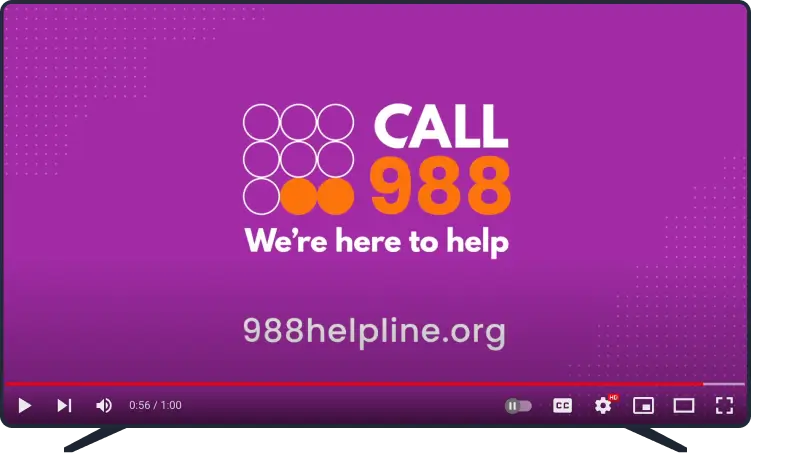
Solution
Magnitude of Change’s team harnessed decades of experience with behavioral change initiatives to formulate and execute a media plan that would help BHSB fortify a critical public resource, educating likely callers on the benefits and capabilities of the 988 Suicide and Crisis Lifeline in a welcoming, nurturing tone across multiple touch points.
The campaign utilized ORION, Magnitude of Change’s proprietary programmatic platform crafted specifically for purpose driven organizations who want to create behavioral change in their audiences, to execute the campaign and run multiple campaigns through multiple industry leading DSPs.
Insights
Through testing and survey data, key insights were uncovered on how the public received the 988 Crisis Line:
- Audiences tended to favor messages that offered a sense of relief, connection, and optimism for a brighter future, without making unrealistic or exaggerated promises.
- The word “crisis” is off-putting: it suggests something overwhelming, chaotic, and impossible to manage. However, “Emergency” is perceived as something urgent that you can take steps to address.
- “Emotional support” was more positively received than “mental health support.”
- A strong majority of all youth respondents said they somewhat or strongly agreed that the ads made them feel they could call or text CALL 988 for emotional support.
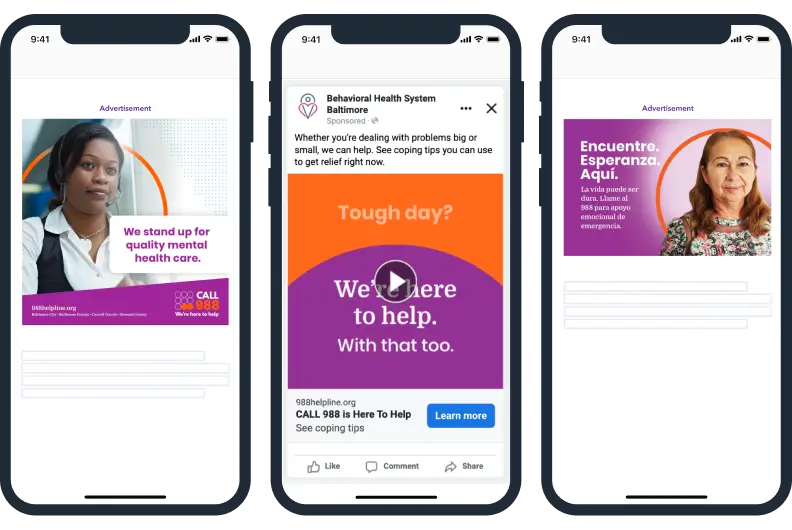

Results
The extraordinary results achieved through Magnitude of Change’s efforts established a gold standard for the 988 Suicide and Crisis Lifeline and is now being adopted in multiple states, including Minnesota and Louisiana, following the inaugural Maryland campaign.
- In the first half of the campaign, Behavioral Health System Baltimore’s 988 website recorded over 28,500 sessions and achieved more than 400 clicks to call – a surprisingly high number, considering easy-to-remember 988 number.
- The 2023 Spring Coping Tips sub-campaign garnered more than 27 million impressions, achieved nearly 12,000 completed views of Behavioral Health System Baltimore’s 988 call center videos, and achieved more than 14,000 website visits.
- Visits during summer 2023 to the website climbed by more than 430% over the first half of the initiative and clicks to call jumped by 200%.
- Direct traffic grew by 43.5% from Digital Out-of-Home advertising alone.
- .27% click-through rate for performance display was almost four times above the industry standard.
- The combined conversion rate of the campaign for clicks to call and tip views rose over the course of the first year to 10.4%, well above benchmarks of 2%-5%.
0.27%
10.4%
43.5%
Other case studies you might like
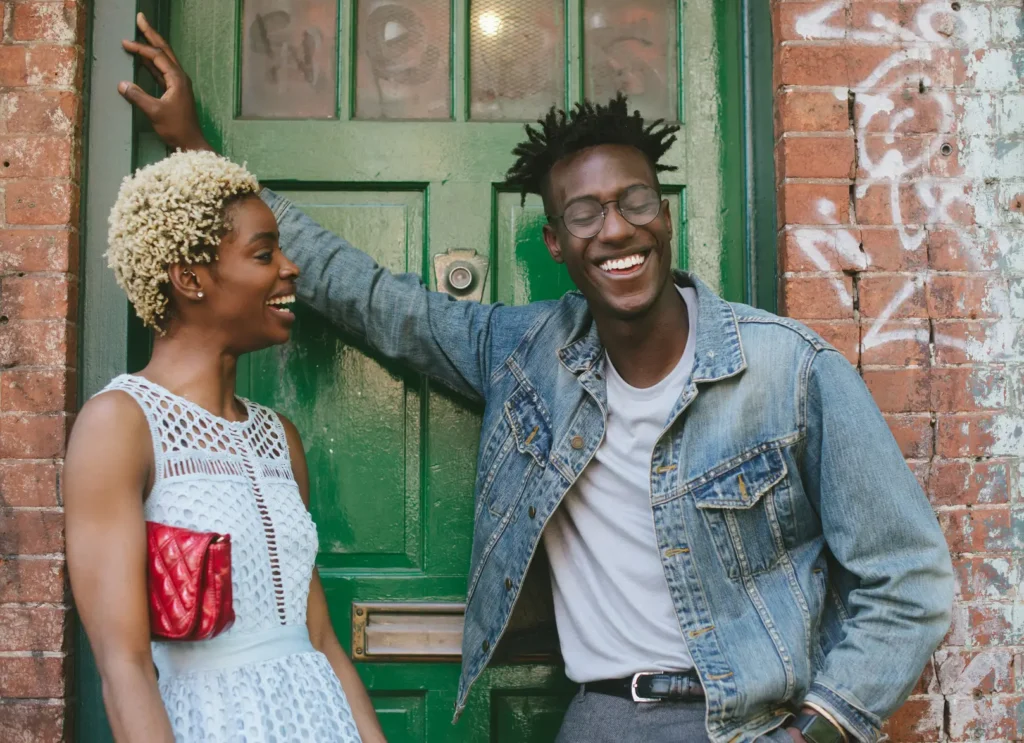
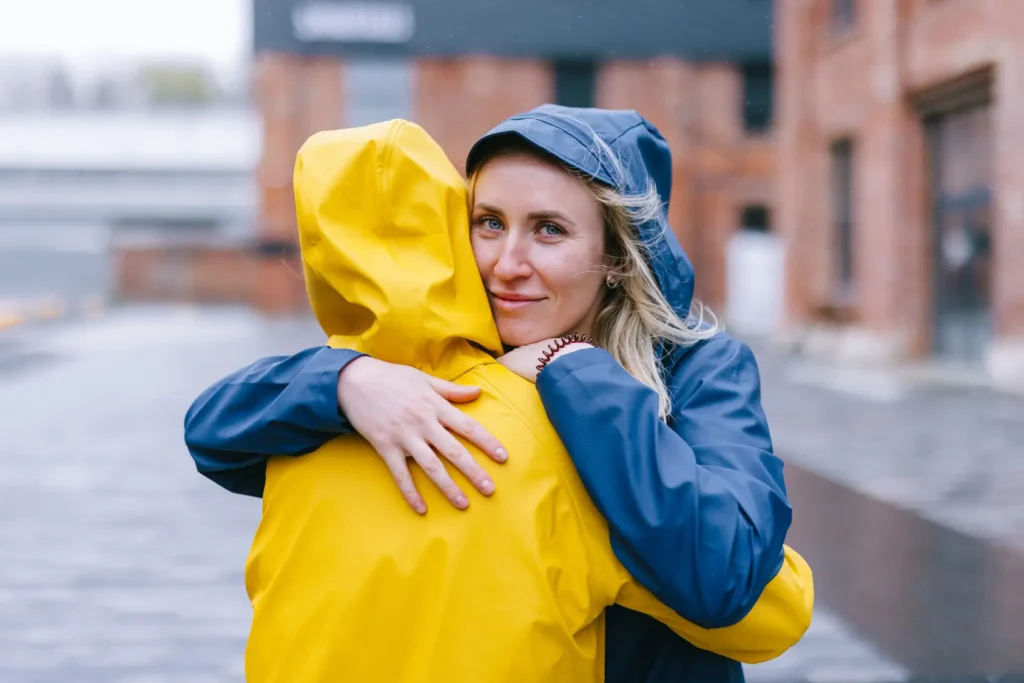
Clearwater Marine Aquarium
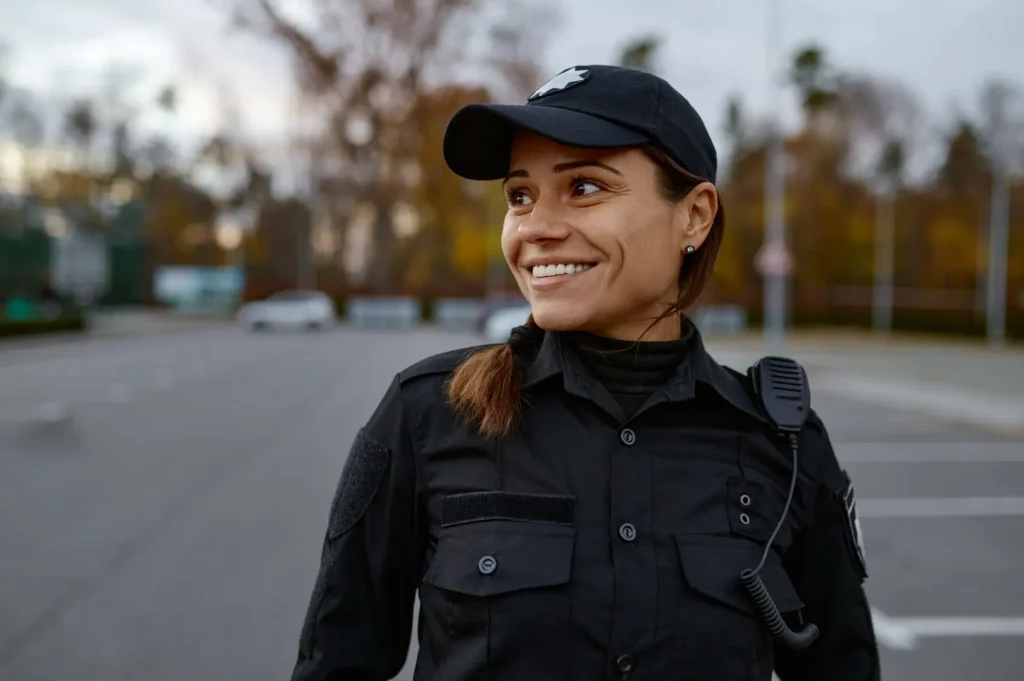
United States Drug Enforcement Administration
